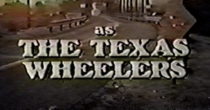Today marks the 70th anniversary of NBC’s Hour Glass, a forgotten pioneer in network television. Tim Brooks and Earle F. Marsh consider it “the first hour-long entertainment series of any kind produced for network television, the first show to develop its own star, the first big variety series, and the most ambitious production by far ever attempted up to its time.”
There were earlier variety shows on television but they aired on individual stations, not networks. One example would be Men at Work, which ran on WCBW in New York City from July 1941 to January 1942.
Hour Glass premiered on Thursday, May 9th, 1946 at 8PM. Mistress of ceremonies for that debut episode was Evelyn Eaton, who was replaced by mid-June by Helen Parrish. The hour featured songs, a short dramatic play, dancing, a comedy routine, and more. It also included two lengthy commercials for sponsor Standard Brands. Reviews were mixed. Billboard was very critical, particularly of Eaton, while Life called it “funny but fuzzy, well acted but poorly produced.”
Hour Glass remained on the air for ten months. The final episode aired on March 6th, 1947. Based on TV listings published in The New York Times, a total of 44 episodes were broadcast. At some point in late 1946, Eddie Mayhoff replaced Helen Parrish as host.
The November 14th, 1946 episode was noteworthy because it featured the cast of The Chase and Sanborn Program radio program, also sponsored by Standard Brands. Edgar Bergen thus became one of the earliest radio stars to appear on television. The following week, NBC’s Robert Stanton was at the world premiere of The Best Years of Our Lives at the Astor Theater in New York City. The December 19th episode was a special Christmas show.
Among the performers who made appearances on Hour Glass were Peggy Lee, Bert Lahr, Ben Carter, Joe Jackson, Rosalee Allen, Jerry Colonna, Dennis Day, Benny Baker, Doodles Weaver, Jack Albertson, and Joyce Van Patten.
Hour Glass was broadcast live from WNBT in New York City. Exactly when it began airing on NBC’s limited Eastern Network is unclear. It was definitely being relayed to WRGB in Schenectady, NY and WPTZ in Philadelphia, PA by December 1946.
The series had been off the air for six months when the kinescope process was officially unveiled. Thus, there are no visual recordings of any episodes of Hour Glass. However, audio recordings of at least 33 episodes do exist and are housed at the Library of Congress. With the exception of the May 30th, 1946 broadcast, audio every single Hour Glass episode from 1946 survives.
Also, Life published seven photographs taken from a TV set (or studio monitor) during the premiere of Hour Glass in its May 27th, 1946 issue. At least three additional photographs exist but were never published. All ten can be found online, along with numerous behind-the-scenes photographs, at the Getty Images website Unfortunately, it’s not possible to embed them here and I’m not paying hundreds of dollars to license any of them.
I’ve tried to collect them in a Getty Image “Board” that can be shared but not embedded. If that doesn’t work, you can view the Life magazine through Google Books or try searching the Getty Images website yourself (“hour glass 1946” worked for me).
It’s remarkable how much survives from Hour Glass. Most TV shows from the mid-1940s are lucky to have a review or maybe a single photograph. To also have more than 30 episodes in audio form is almost unbelievable. Perhaps one day I’ll actually get a chance to listen to a few of the audio recordings.






The Getty Image Board does work, and I was able to see the photos.
I’ve long been fascinated by the early post-World-War-II days of television, when a group of people with clunky equipment and little money were trying to “invent” network television before the watchful eyes of the few thousand people who owned a TV receiver at the time.
Thank you for posting the articles,